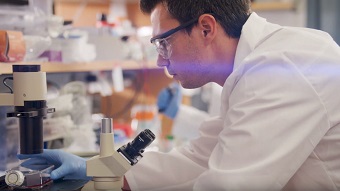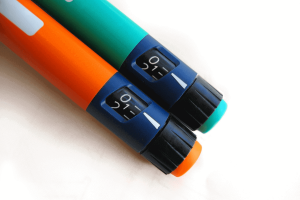
Just Diagnosed With Diabetes… Now What?
So you’ve just been diagnosed with diabetes… Now what? All of the information being thrown at you at once can be pretty overwhelming. Keep this blog post handy on your phone, so you can revisit it frequently to help make sense of your new diagnosis.
Diabetes: The Types
There are two main types of diabetes but there are actually a few others. Here we outline the different types, how common they are, and the differences between them.
- Type 2: This is the most common type of diabetes. According to the CDC, about 90% of people with diabetes have this type. It affects more than 34 million Americans. Patients with Type 2 tend to be diagnosed later in life but it is becoming more common for children to be diagnosed with this type.
- Type 1: Type 1 diabetes means your pancreas produces little to no insulin. This type of diabetes tends to be diagnosed earlier in life. It is an autoimmune disorder. Less than 10% of people diagnosed with diabetes have Type 1.
- LADA (Latent Autoimmune Diabetes in Adults): LADA can be a controversial form of diabetes, as some doctors do not recognize it as a separate type of diabetes, while some recognize it as a subtype of Type 1. Many refer to it as Type 1.5 because it seems to be somewhere in the middle between Type 1 and 2.
- Gestational: This type of diabetes occurs in pregnant women. It occurs when your blood sugar levels are too high during pregnancy. For most women, their blood sugar returns to normal after giving birth. Gestational diabetes does increase your risk for developing Type 2 diabetes later in life.
- Prediabetes: This is actually the most common condition listed here. It affects 88 million American adults. Prediabetes is when you have high blood sugar but not high enough to be diagnosed as diabetes. Prediabetes increases your risk for developing diabetes, as well as other complications, such as heart disease and stroke.
Treatment
The biggest thing you can do for your body after being diagnosed with any type of diabetes is to eat healthy and get moving. Diet & exercise can reverse prediabetes and, in some cases, type 2. Talk with a local dietitian and your diabetes doctor to work on the right diet and exercise plans for you.
In addition to eating healthy and exercising, there are different types of medications your doctor may prescribe to you after being diagnosed with diabetes.
- If you were just diagnosed with Type 2, it is very common to be put on a drug called Metformin because it is very effective and does not cost a lot. Make sure to take it with food to avoid the common side effect, an upset stomach. There are many other types of oral medications prescribed for Type 2.
- If you were just diagnosed with Type 1, you will most likely be given insulin. Insulin helps your body use the excess sugar in your blood. It is the chemical that your pancreas should be making on its own but is not.
- When you give your body the right amount of insulin, your blood sugar goes down to a normal level. When you have too much insulin, your blood sugar can get dangerously low. When you don’t give yourself enough, your blood sugar can dangerously high.
- It’s very important to take your meds exactly as directed by your doctor. Make sure to ask your doc all the questions you have so you fully understand your meds.
Carbohydrates
There are many things listed on the nutritional labels of your food, but the one you want to be on the lookout for is carbs. This is what impacts your blood sugar levels.
- For people with Type 1, there is a practice called Carb Counting in which you have to find the amount of carbs in the food you eat in order to correctly calculate the amount of insulin you should take.
- For people with Type 2 (and all types), it is important to be mindful of the amount of carbs in your foods. Make a habit out of checking the nutritional info on your food to find the carbohydrate content.
- A good amount of carbs per meal can range anywhere from 20-65 grams of carbs, depending on the diet that is right for you. Again, be sure to speak with a dietitian about a meal plan that works for you.
Know You’re Not Alone
Did you know 10% of the U.S. population has diabetes? And 34% have prediabetes, according to the ADA. You aren’t on this journey alone. Try not to feel stigmatized by your new diagnosis. Talking with others about what’s going on in your life is almost always a good thing. There are lots of support groups out there, many of them online.
If you are based in Iowa, there is an outstanding community of support on Facebook, in the group, Iowans With Diabetes. Join the group to find other like-minded people who may be going through the same struggle as you, or maybe they’ll have an answer to a question you have. Whatever it is, remember: being diagnosed with diabetes isn’t the end-all, be-all. You aren’t alone.




